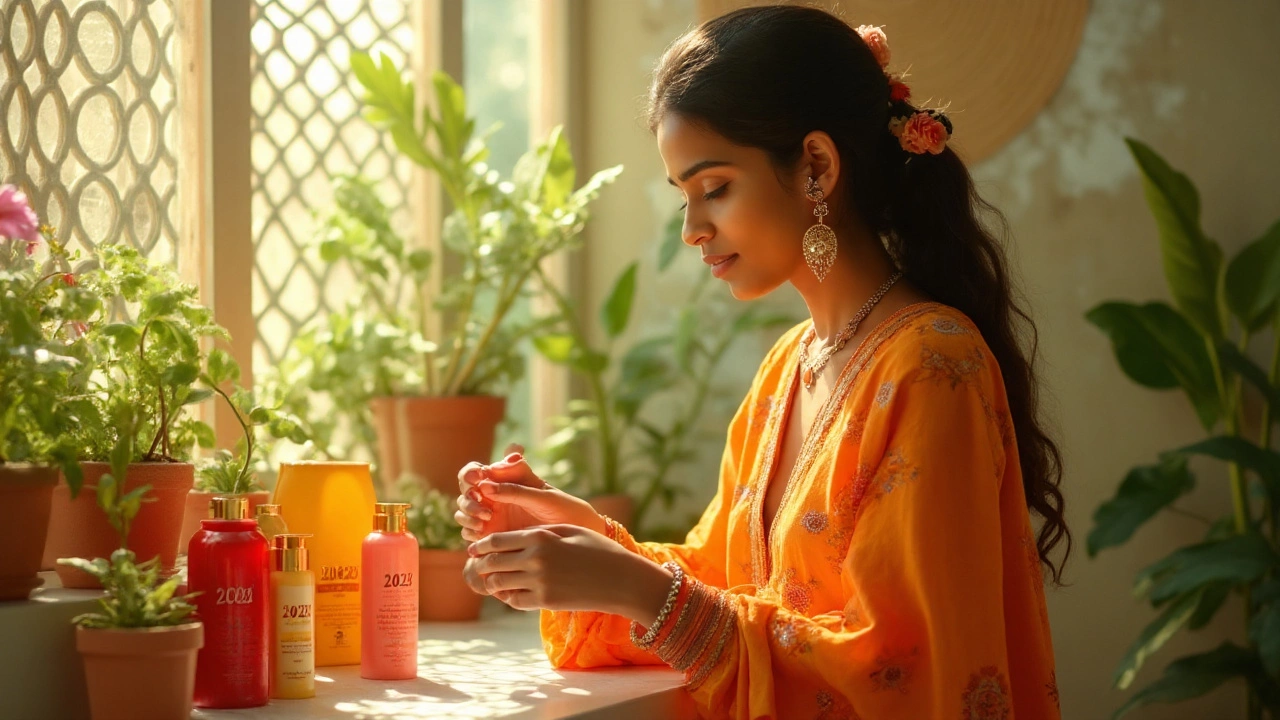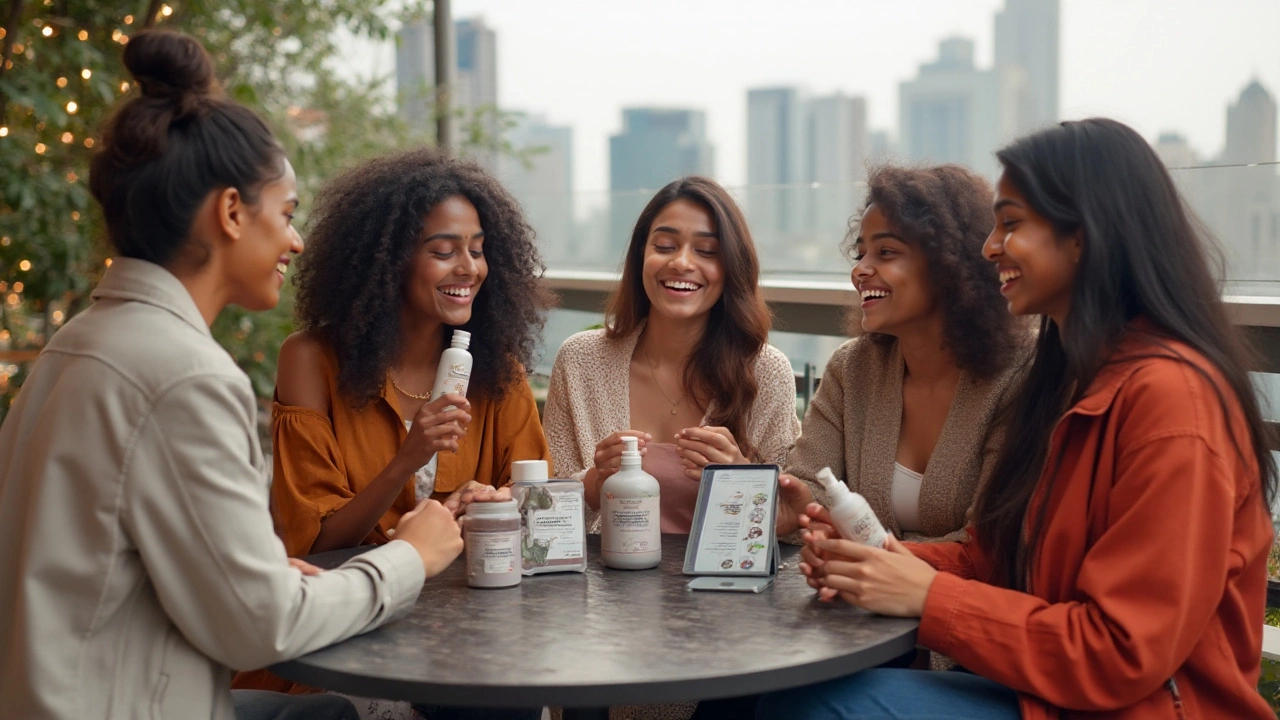
Trying to figure out what the best skincare brand is feels like choosing one flavor at a gelato shop with 100 options—each one flashing signs about rare ingredients, glowing influencers, and science-y claims you half-understand. With beauty aisles and Instagram posts overflowing, it’s easy to feel lost (and sceptical). But digging past clever ads, there are ways to cut through the noise, spot what’s working, and know how to choose what's actually best for your skin right now—especially in 2025, when the pressure to have flawless, glassy skin is everywhere, even on Zoom calls.”
What Defines the Best Skincare Brand?
The “best” isn’t the same for everyone—and let’s be real, no single brand fits every skin type or budget. What really matters? Consistency, ingredient safety, transparent sourcing, and results that show in real life, not just filtered photos. Australian skin gets hammered with sun, so local brands know to include robust SPF, antioxidants, and hydration boosters. European and Korean lines, on the other hand, have their own cultural spin (think gentle layering or heavy-duty anti-pollution ingredients).
Ingredient integrity is what separates a decent formula from a star performer. Look for brands that actually list active percentages (like 15% vitamin C or 0.5% retinol) instead of hiding their formulas behind “proprietary blend” jargon. Many cult brands—take The Ordinary, La Roche-Posay, and Paula’s Choice—make their doses and clinical trials easy to track. In contrast, some luxury lines slap a pretty jar on average formulas. Consumer reviews and dermatologist backing matter too, not just viral TikToks or influencer unboxing videos.
Another thing: science moves quick. Since COVID, Aussie brands like Ultra Violette and Go-To Skincare shot to stardom for clear ingredient labels, cruelty-free testing, and cheeky branding that makes everything feel less intimidating. Meanwhile, Korean skincare keeps launching skin-barrier innovations like ceramide-rich creams and snail mucin serums (yep, snail goo is huge). Proven actives—niacinamide, hyaluronic acid, vitamin C—are the backbone of the best modern products. Brands that mix these reliably and affordably have the edge.
Skin sensitivities create minefields. The best brands avoid harsh alcohols and known allergens like synthetic fragrances or parabens. Instead, more lines are using sustainable botanicals—green tea extract, cica, squalane—from traceable, eco-friendly sources. Eco-conscious shoppers demand this shift, and some labels (like Biologi, Alpha-H, and Sukin in Australia) are leading the pack by publishing how and where each ingredient is sourced.
Don’t trust “best of” lists that only push high-end brands, though. Sometimes a $13 Chemist Warehouse classic like Cetaphil or La Roche-Posay packs more punch for sensitive skin than trendy $80 bottles. For acne, dermatologist-backed lines like Neutrogena or Avene still hold up. For anti-aging or pigmentation? Look for clinical data (Peptide-packed formulas from Olay Regenerist or prescription brands like Medik8).

Decoding Claims: Clinical Studies, Buzzwords, and Celebrity Endorsements
Here’s the wild part—just because a brand is plastered across billboards or shows up in every second “get ready with me” video, doesn’t guarantee it’s best for you. In 2025, the beauty industry spends billions on buzzwords—“non-comedogenic,” “dermatologist-recommended,” “clean beauty”—without standardizing what those even mean. “Dermatologist-tested” often just means it didn’t give someone a rash. “Clean” can be marketing-speak unless the brand proves toxin-free testing.
It helps to know a bit of label decoding. If a brand’s website or packaging lists studies with cold, hard data (example: 75% reduction in dark spots after 12 weeks, as in some L’Oreal Repigment studies), that's gold. Consumer trials are nice, but peer-reviewed clinical results hold the real weight. Look for before-and-after photos that aren’t retouched (shadows, freckles, pores still visible). Brands like Paula’s Choice or SkinCeuticals have a cult following because they’ve been quietly publishing real results for years.
Next, beware miracle claims that sound too good to be true. If a face cream promises “total age reversal in 7 days,” it’s probably an exaggeration. Celeb lines—like from Rihanna, Hailey Bieber, or even Beckham—often start strong, but you want to see consistent user feedback after the launch hype dies down. Brands that truly make a difference build a reputation over years, not viral launch weeks.
One interesting trend: more brands focus on the skin “microbiome”—all those invisible bacteria and fungi that keep skin healthy. Look out for brands making “prebiotic” and “probiotic” claims, like Gallinée in Europe or Aveeno’s Calm+Restore. The jury’s still out, but studies from 2023 showed better moisture retention in people using these kinds of formulas regularly.
When comparing top products, pit ingredient strengths head-to-head. Sunscreens? Check UVA/UVB broad spectrum with SPF50+, like Aussie favorite Mecca Cosmetica’s To Save Face. For serums, Australian summer really benefits from a high antioxidant combo, so look for a brand with vitamin C plus Ferulic acid—SkinCeuticals C E Ferulic stays unbeaten by most derms for brightening.

How to Choose: Tips for Finding Your Holy Grail Skincare
You probably know by now that your friend’s “life-changing” moisturizer might not even tingle your skin, and what cleared your neighbour’s acne scared up new breakouts for you. Picking the best skincare brand means knowing your skin’s story—its quirks, triggers, and texture changes—and matching those to a brand’s strengths.
If you have sensitive or reactive skin, stick to hypoallergenic and fragrance-free options. Try patch-testing—dab a bit on your wrist or jaw, check for a reaction in 24 hours. Sunscreen should never sting or clog pores, so lightweight, gel-based mineral formulas like those from Ultra Violette, La Roche-Posay Anthelios, or Neutrogena HydroBoost work for most Aussie skin types (and climate).
Acne-prone? Go for gentle exfoliants like The Ordinary’s Glycolic Acid 7% or Paula’s Choice 2% BHA Liquid. Keep actives simple (never mix strong retinoids with vitamin C in one go). Big on anti-aging? Layer up with ingredients backed by years of clinical data: retinol (Medik8 Crystal Retinal), peptides (Olay Regenerist), and antioxidants (Skinceuticals, ASAP Skincare). Watch out for “purging”—temporary breakouts as skin adjusts to new actives.
Budget is real—seriously, don’t overspend just because an eye-catching celebrity line went viral. Chemist brands can do just as much heavy lifting, and subscription boxes (like Adore Beauty’s skincare box in Australia) let you trial high-end minis for less. Watch for deals or “empties week” discounts—lots of retailers offer 20% off just before new launches to clear stock.
When in doubt, look for transparency. A great brand shows ingredient lists on their site, explains what each one does, and avoids greenwashing. Want the eco route? Seek out Australian natural heroes like Alya Skin (famous for their pink clay mask) or Grown Alchemist (organics with science-backer formulas). But even the purest botanicals can cause a rash if you’re sensitive, so “natural” isn’t always safer.
There’s one universal rule: always patch test your actives and go slow with new routines. Your skin’s mood changes season to season. If you get overwhelmed, see a derm—they can recommend the simplest and best brand for your skin’s unique needs. While there’s no one-size-fits-all answer, armed with a bit of ingredient knowledge, Aussie product know-how, and a healthy scepticism of hype, you can actually find your best skincare brand—and avoid expensive mistakes along the way.
 Hair Care
Hair Care